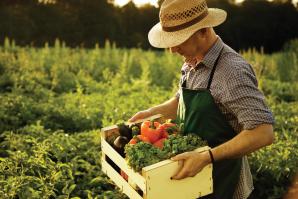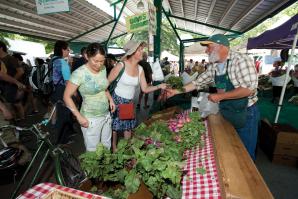Despite the general doom and gloom of our state’s current economy, there are a few bright spots that may be going unnoticed. Our large, diverse and dynamic agricultural industry is one of them. We are blessed with a climate that allows a long growing season; a reputation for producing safe, high-quality food; and a range of high-value crops that consumers across the country — indeed around the world — are eager to buy.
As a result, California has been the nation’s top producing agricultural state since 1948 and has gradually increased its share of U.S. farm cash receipts from 9.5 percent in 1960 to 12.8 percent in 2007. For all the talk of Texas as a draw for California companies, the Lone Star state is a very distant second when it comes to agri-business. California growers and processors out-produce and outsell Texans nearly two to one.
Today the California agriculture industry generates more than $38 billion annually. And every $1 billion in sales generates 18,000 jobs, both on and off the farm, according to economists at the UC Davis Agricultural Issues Center.
Nowhere in California is agriculture more important than in our region. Farming and related industries remain the economic base of the Sacramento and San Joaquin valleys. In fact, if the Central Valley were a state, it would be ranked first in the nation in agricultural production.
It is fitting, then, that our region is taking a lead in new initiatives that promise to expand agriculture while tapping into consumers’ growing interest in buying fresh, safe, locally grown food with all its health and environmental benefits.
One of the most promising of these initiatives is the San Francisco Food Shed project, managed by the nonprofit Great Valley Center; supported by other nonprofits, such as the Brentwood Agricultural Land Trust; and funded by the state Department of Agriculture as part of a block grant from the federal government. Its goal is to connect buyers in San Francisco with growers who are within 150 miles of the Bay Area.
Step one is to conduct what are essentially internal trade missions: San Francisco food buyers travelling to our region’s food growers and growers travelling to the city to meet retailers. Step two is to build an infrastructure that allows these sellers and growers to easily buy and deliver farm products.
The focus will be on high-value specialty crops — vegetables, fruits and nuts — products that are already responsible for more than half of all California’s agricultural cash receipts.
I like everything about this program. It is based on a careful assessment of local market needs and opportunities. It has a clear, targeted goal. It uses minimal tax dollars (less than $300,000) to support an industry-nonprofit partnership. It keeps consumer dollars close to home. It is environmentally responsible in helping growers to reduce the distance their products must be shipped and thus their carbon footprint. And it simultaneously encourages consumers to eat better by making available fresh, locally grown fruits and vegetables.
A broader initiative by the California State Board of Food and Agriculture aims to replicate exactly this type of regional marketing in metropolitan areas across the state, always as a partnership between agricultural and nonprofit organizations. In each case, the goal is to not only help growers both expand and diversify their markets, but also to bring farmers closer to urban consumers, thus promoting better public understanding of and support for agriculture.
As these and other promising initiatives are put in place, the agricultural industry may prove to be one of the economic engines that help us ride out this recession. We could end up building for the future by going back to our roots.
Recommended For You

Eat it Up
Why you should salivate over Sacramento’s farm-to-fork mantra
In October of last year, Sacramento Mayor Kevin Johnson declared Sacramento the “Farm-to-Fork Capital of America,” presenting the city with a long-term opportunity to build a distinct brand identity that could help the region attract and retain citizens, conventions, tourists and entrepreneurs. It’s especially valuable because a strong regional identity gives energy to the economic engines that make cities successful. Anyone needing proof can look directly to Austin, Texas.

Root Cause
The campaign behind Sacramento’s foodie identity
It was the last farmer’s market of the season, and the photo-op recalled The Last Supper. Standing in Cesar Chavez Plaza, Mayor Kevin Johnson spread his arms behind two tables piled high with fresh fruits and vegetables. And with scores of white-aproned restaurateurs to his right and left, he unveiled a logo promoting Sacramento as an agronomical Eden.


